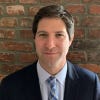Sponsored By
Daymond John speaking at the Advyzon conference
Diversity & Inclusion
Representation, Tech and the Future of Financial Services: My Advyzon ExperienceRepresentation, Tech and the Future of Financial Services: My Advyzon Experience
Innovation, strategic networking and cross-generational collaboration offer a path forward.


























.png?width=100&auto=webp&quality=80&disable=upscale)
























